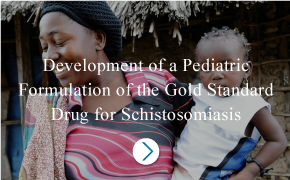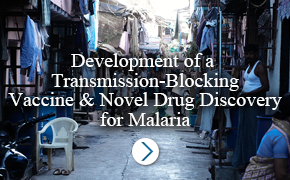Health Impact
HIV/AIDS, malaria, and tuberculosis (TB) are among the most deadly diseases in the developing world. In 2013, the World Health Organization (WHO) reported that 35 million people were living with HIV/AIDS – with the majority living in sub-Saharan Africa. In 2012, over 97 countries reported ongoing malaria transmission with over 90% of related deaths occurring in sub-Saharan Africa1. Similarly, TB is spreading globally at a devastating rate, especially through Western and Southern Africa. In 2012, the WHO reported 8.6 million new cases, and the disease is currently listed as the #2 infectious disease killer worldwide, second only to HIV/AIDS2. Neglected Tropical Diseases (NTDs), as their name suggests, often exist in the shadow of the more publicized diseases above, but in fact affect a large global population. NTDs are a group of 17 diseases that cause disabling parasitic and bacterial infections and are transmitted through soil and water. More than a billion people suffer from one or more NTDs worldwide3. Over half of all people affected are children4. More than 310 million people (1 in 6 people around the world) are infected annually by HIV/AIDS, malaria, TB, and NTDs. Of this group, some 3.5 million will die every year. In addition to the fatalities and symptoms each of these diseases cause, they also weaken an individual’s immune system - thereby increasing susceptibility to other infections.
Societal Impact
HIV/AIDS, malaria, TB, and most NTDs are characterized as ‘disablers,’ leading to appalling decreases in the quality of life of those who live with their symptoms (even while receiving treatment)5. These effects ripple across households. For example, individuals infected by TB can lose 3-4 months of work time, and their families can lose up to 30% of their annual income due to lost productivity, disability, and the cost of treatment6. Similarly, lymphatic filariasis (an NTD) affects middle-aged men in their working prime and can result in the loss of as much as 11 years of productivity or 15% of cumulative individual income7. In addition, both these individuals and their families face significant social stigma due to the massive swelling of the patient’s limbs caused by the disease. Furthermore, these diseases have a broader impact on communities through effects on education. Malarial infections, for example, are believed to be responsible for up to half of preventable absenteeism in African schools—an estimated 10 million missed school days each year in that continent alone8,9.
Economic Impact
The disease epidemics described above have a profound impact on the economies of the developing world. Such impact can be described in terms of direct healthcare system costs related to care and treatment of the illness, and indirect costs related to losses in productivity due to disease related disabilities and deaths. Indirect costs for these diseases are large since they affect individuals at or before their prime working age. For example, annual direct costs to manage malaria programs worldwide is estimated to be approximately US$5 billion, while the indirect costs associated with the malaria epidemic in Africa alone is estimated to be US$12 billion in lost Gross Domestic Product (GDP). Similarly, TB control and treatment programs have an estimated annual direct cost of US$4-8 billion10, while TB related cases will deplete some of world’s poorest countries of an estimated US$1-3 trillion over the next 10 years11. While the costs are astounding, these examples also help to illustrate the large potential economic gains that can be achieved with cost-effective, early intervention strategies for fighting these diseases.
- 1. Key malaria facts. Roll Back Malaria Website. http://www.rbm.who.int/keyfacts.html. Accessed November 10, 2014.
- 2. Global tuberculosis report 2013. Geneva: World Health Organization; 2013. http://apps.who.int/iris/bitstream/10665/91355/1/9789241564656_eng.pdf. Accessed November 11, 2014.
- 3. About the Neglected Tropical Disease Program. USAID's Neglected Tropical Disease Program Website. http://www.neglecteddiseases.gov/about/. Updated June 16, 2014. Accessed September 2014.
- 4. The Lancet. Neglected tropical diseases: becoming less neglected. The Lancet. 2014;383(9925):1269. doi:10.1016/S0140-6736(14)60629-2.
- 5. Hotez PJ, Alvarado M, Basanez M-G, Bolliger I, Bourne R, et al. The Global Burden of Disease Study 2010: Interpretation and Implications for the Neglected Tropical Diseases. PLoS Negl Trop Dis. 2014;8(7):e2865. doi:10.1371/journal.pntd.0002865.
- 6. Economic impact of TB. TB Alliance Website. http://www.tballiance.org/why/economic-impact.php. Accessed November 10, 2014.
- 7. Ramaiah KD, Das PK, Michael E, Guyatt H. The economic burden of lymphatic filariasis in India. Parasitology Today. 2000;16(6):251-253. doi: 10.1016/S0169-4758(00)01643-4
- 8. Vitor-Silva S, Reyes-Lecca RC, Rinheiro TRA, Lacerda MVG. Malaria is associated with poor school performance in an endemic area of the Brazilian Amazon. Malaria Journal. 2009;8:230. doi:10.1186/1475-2875-8-230.
- 9. The Challenge. Malaria No More Website. http://www.malarianomore.org/pages/the-challenge. Accessed September 2014.
- 10. The Economic Burden. Aeras Website. http://www.aeras.org/pages/beyond-a-health-crisis. Accessed November 10, 2014.
- 11. Economic Impact of TB. TB Alliance Website. http://www.tballiance.org/why/economic-impact.php. Accessed November 10, 2014.


